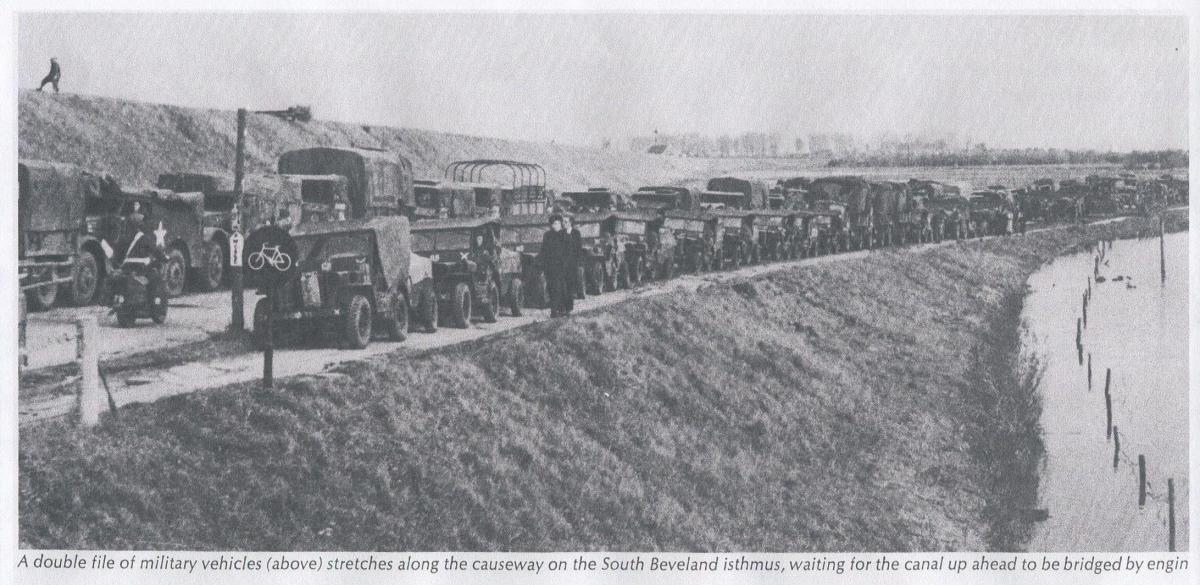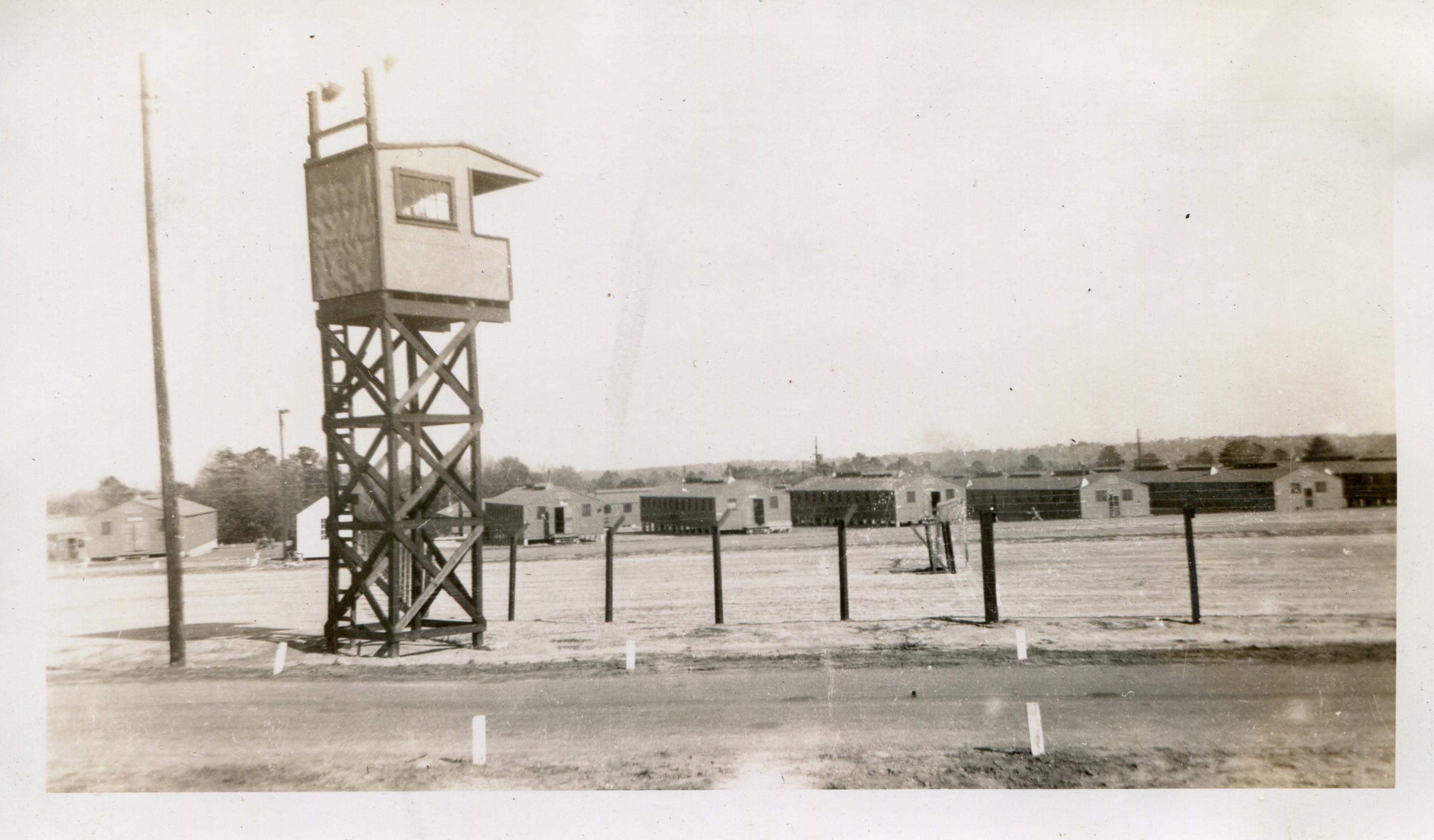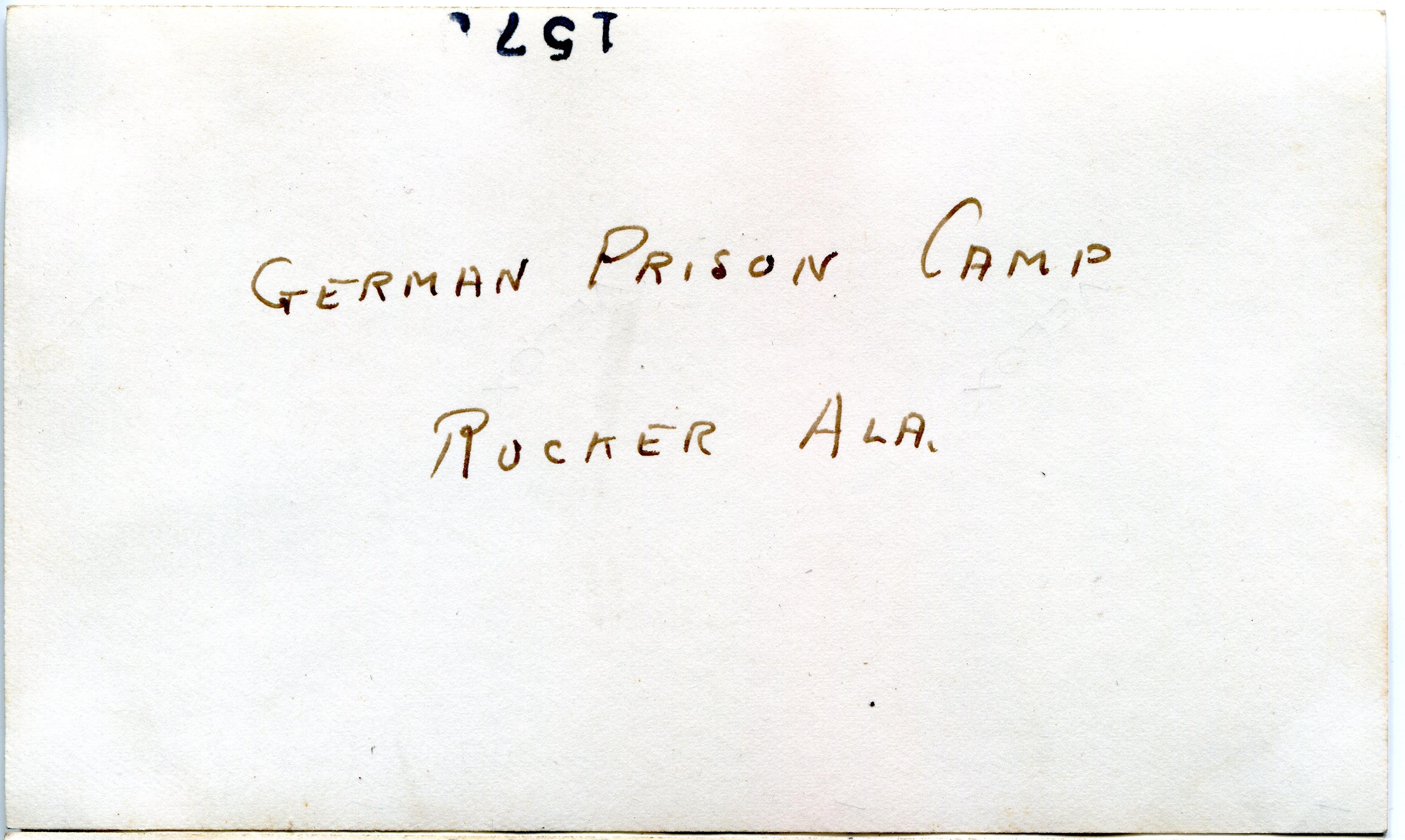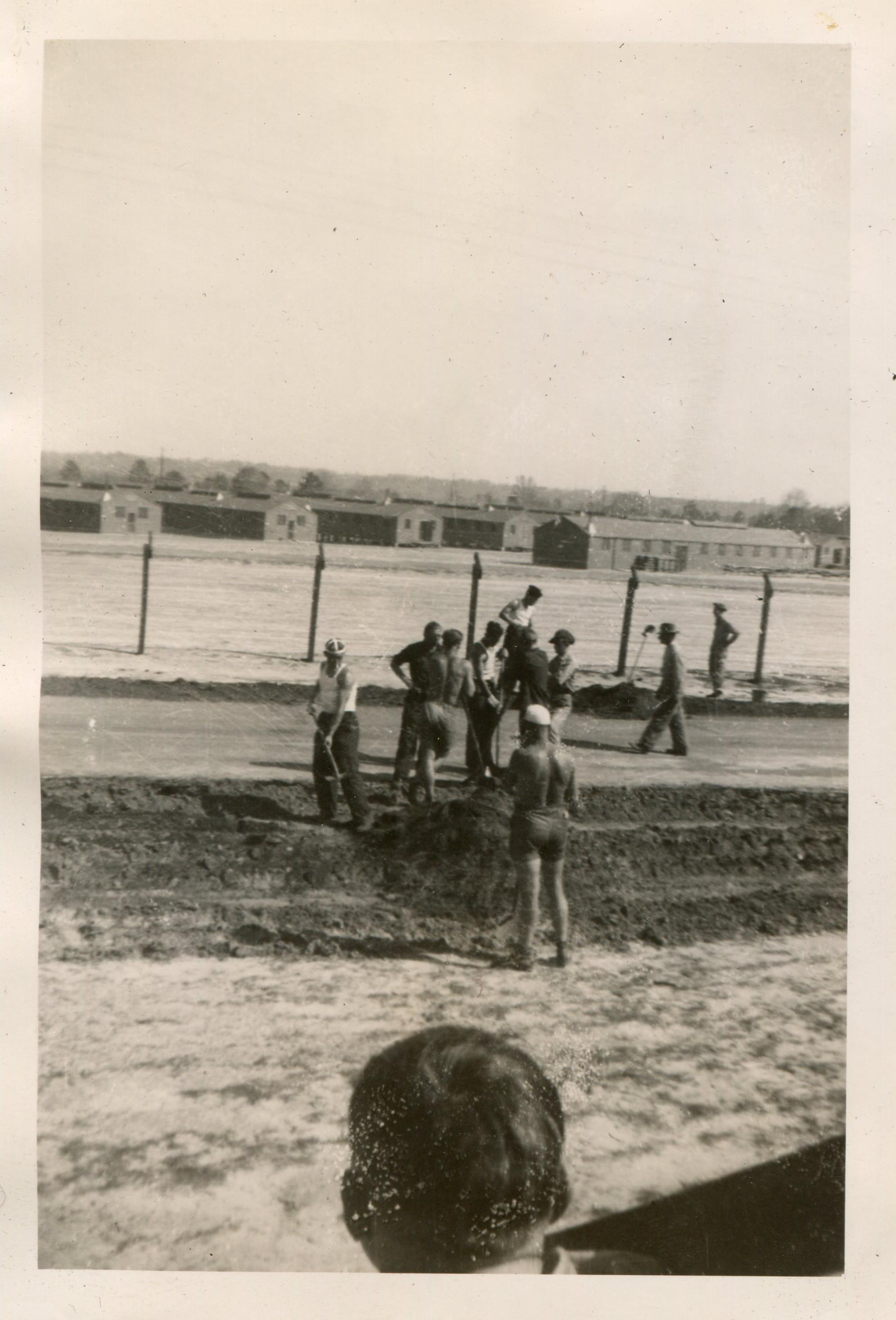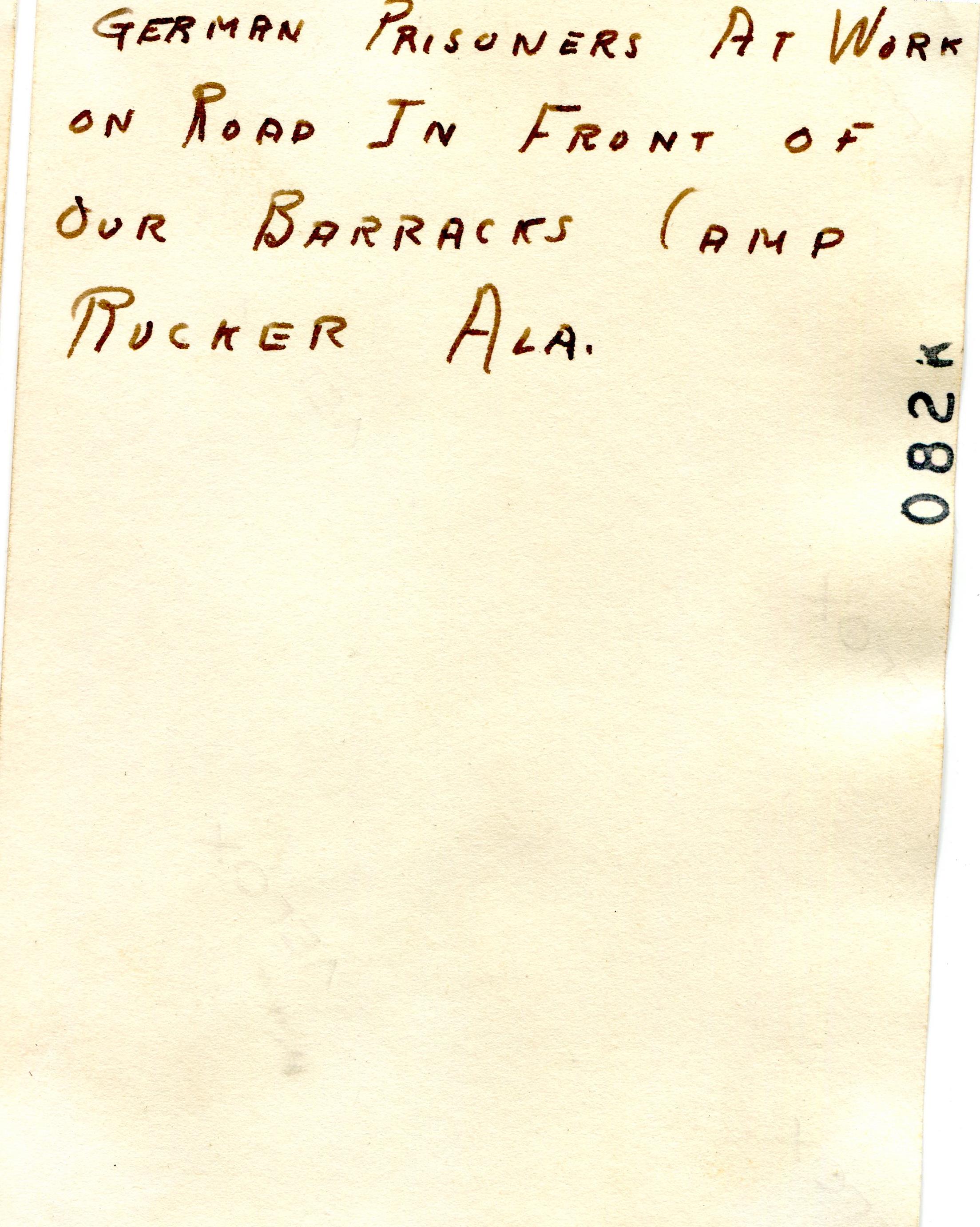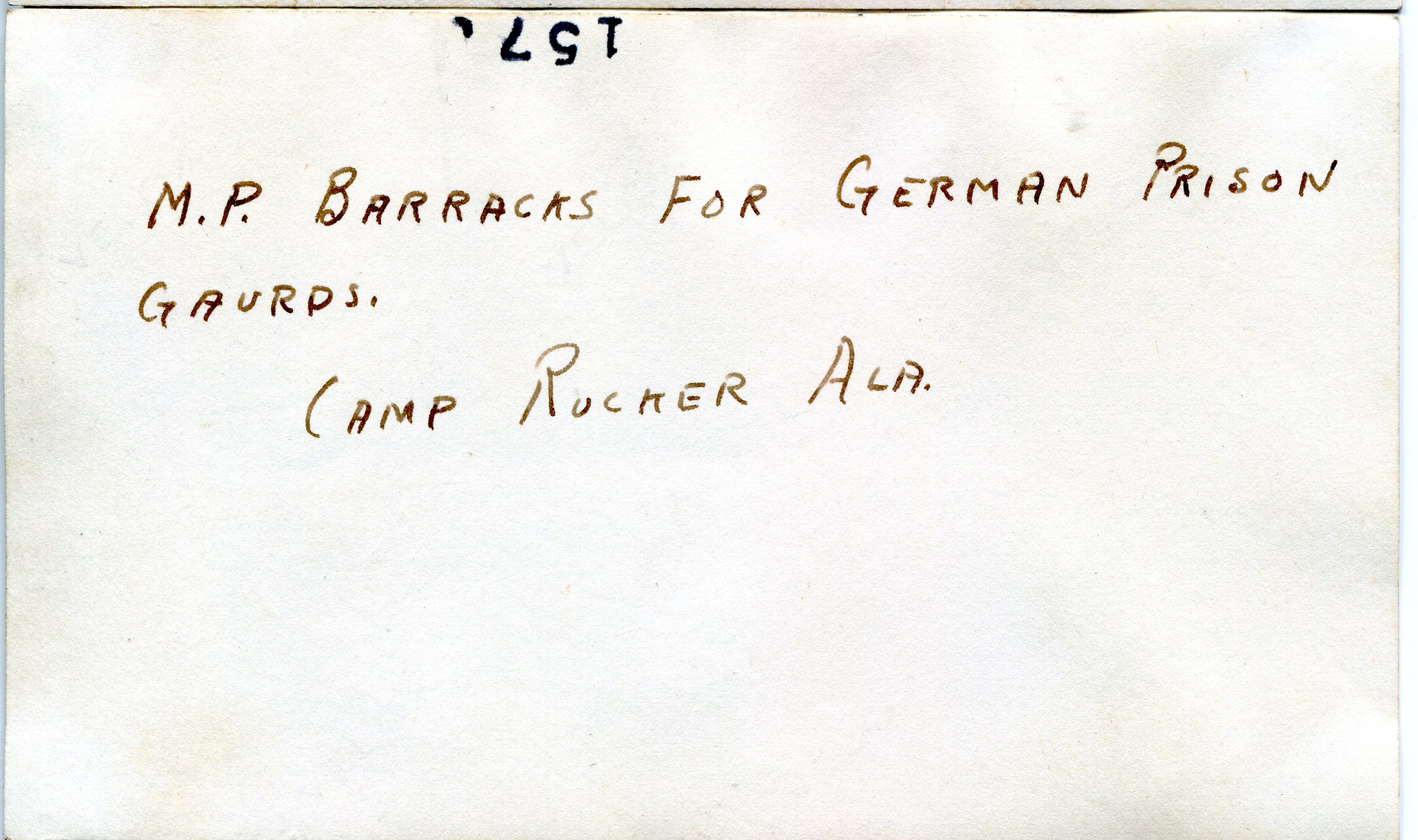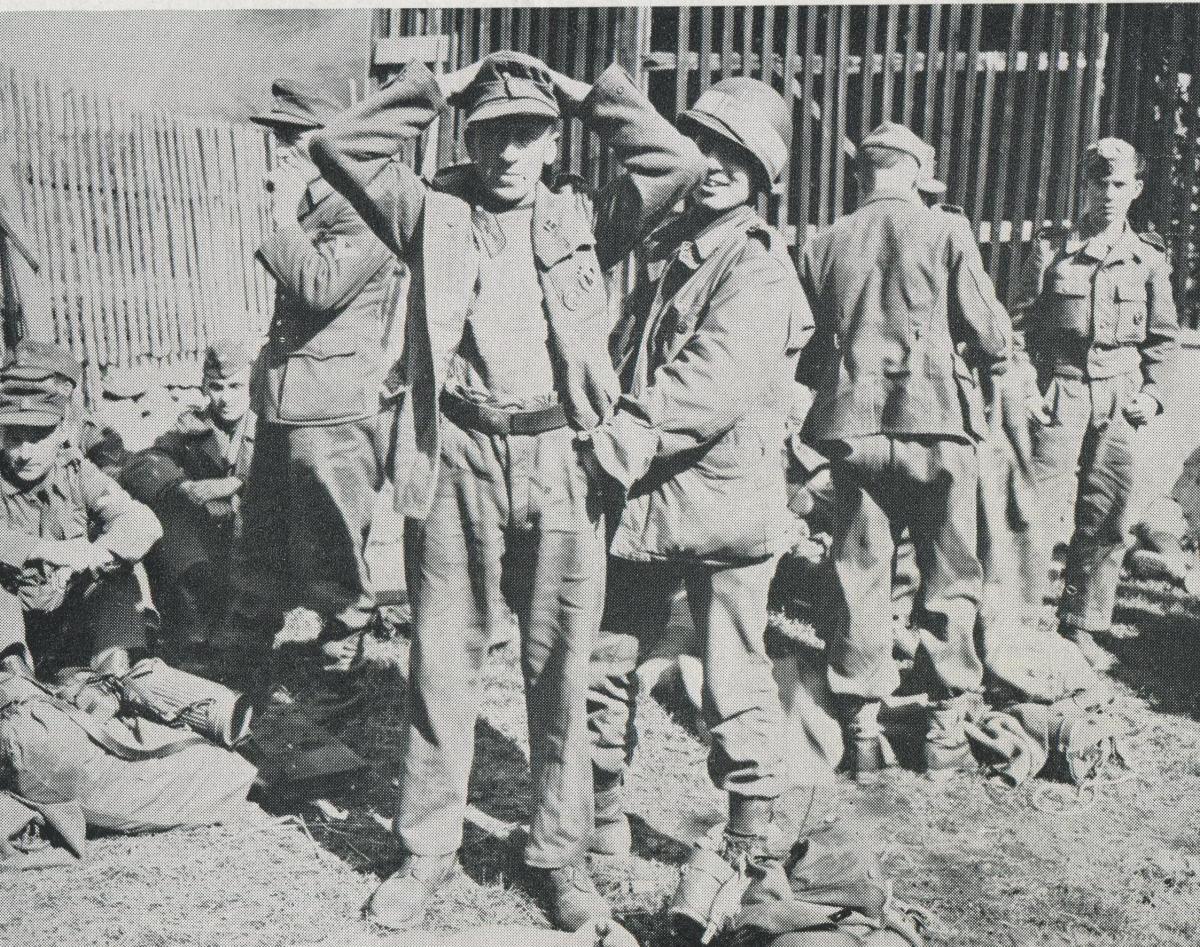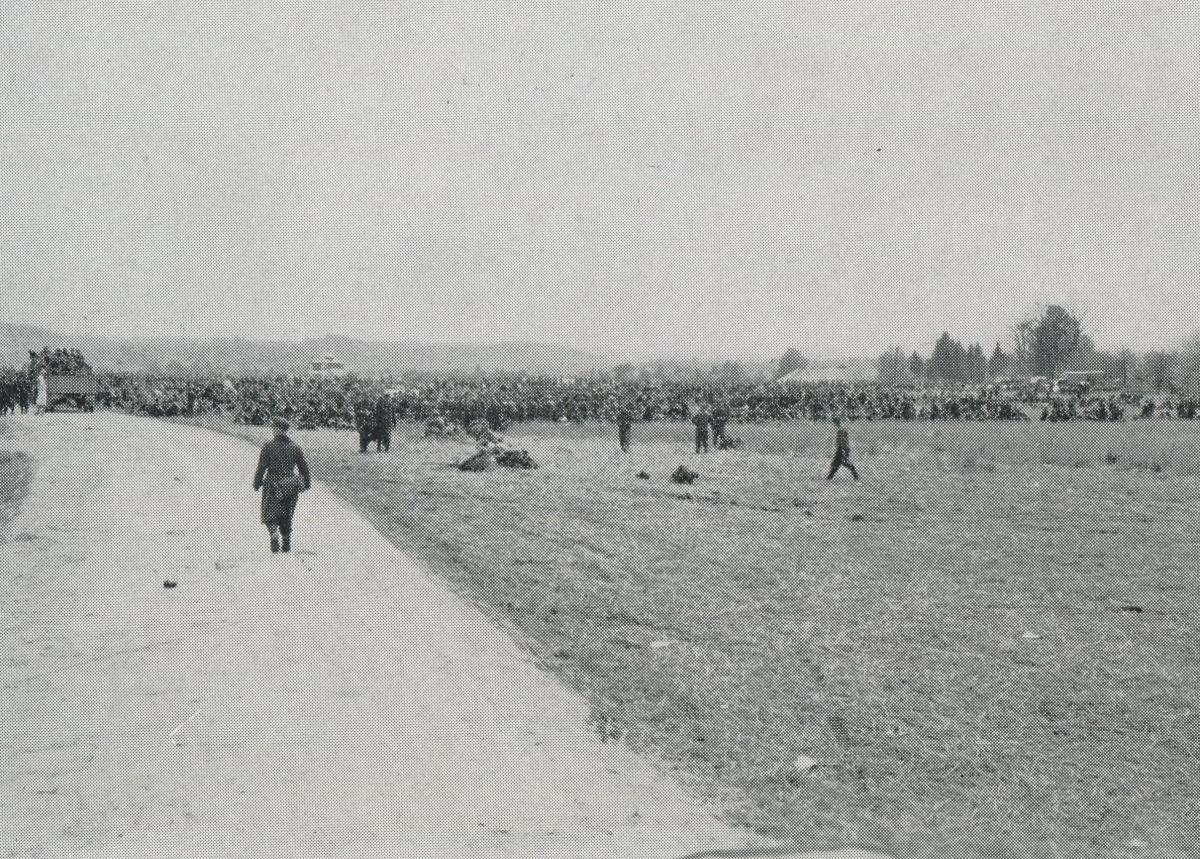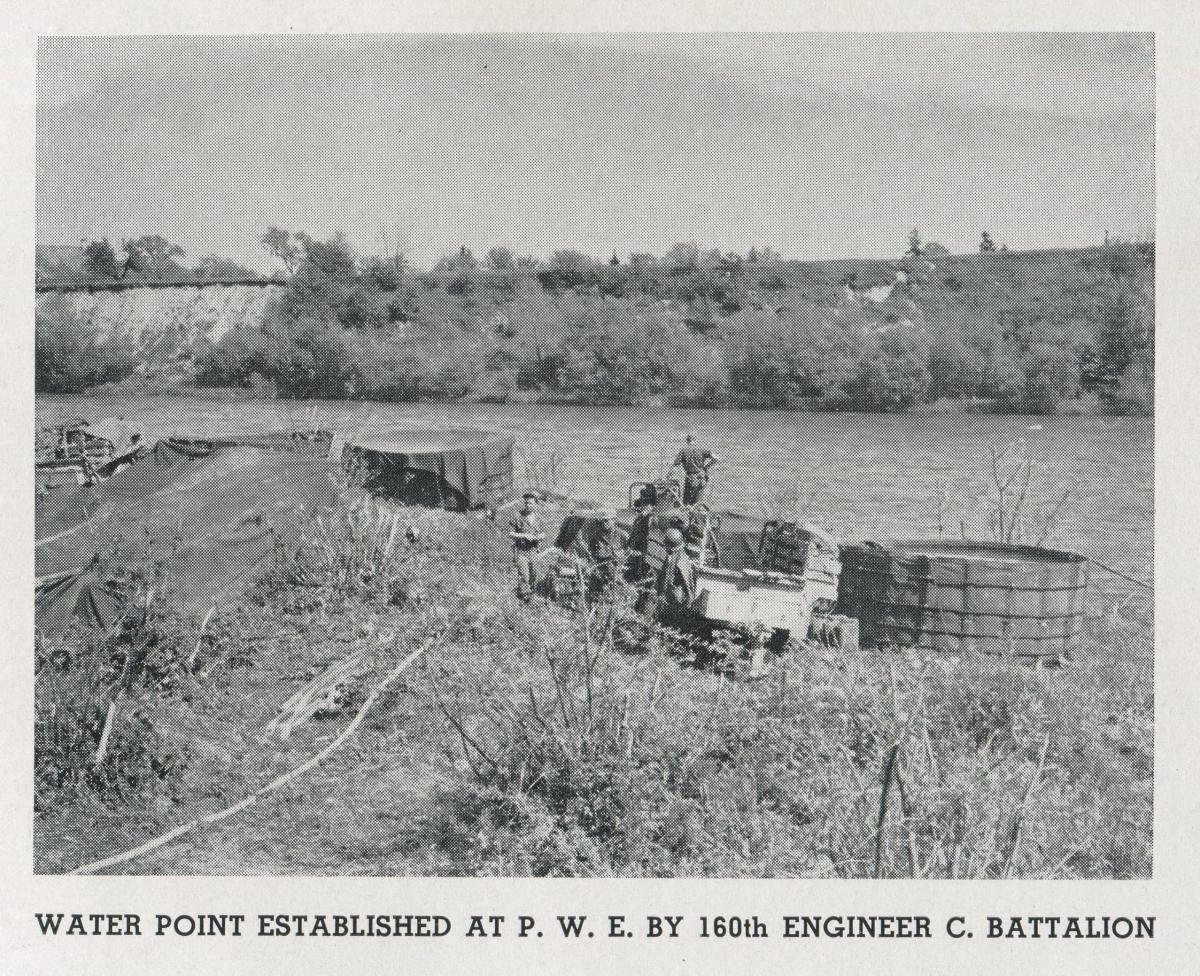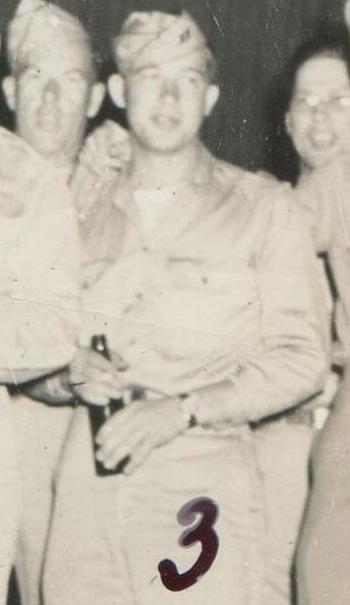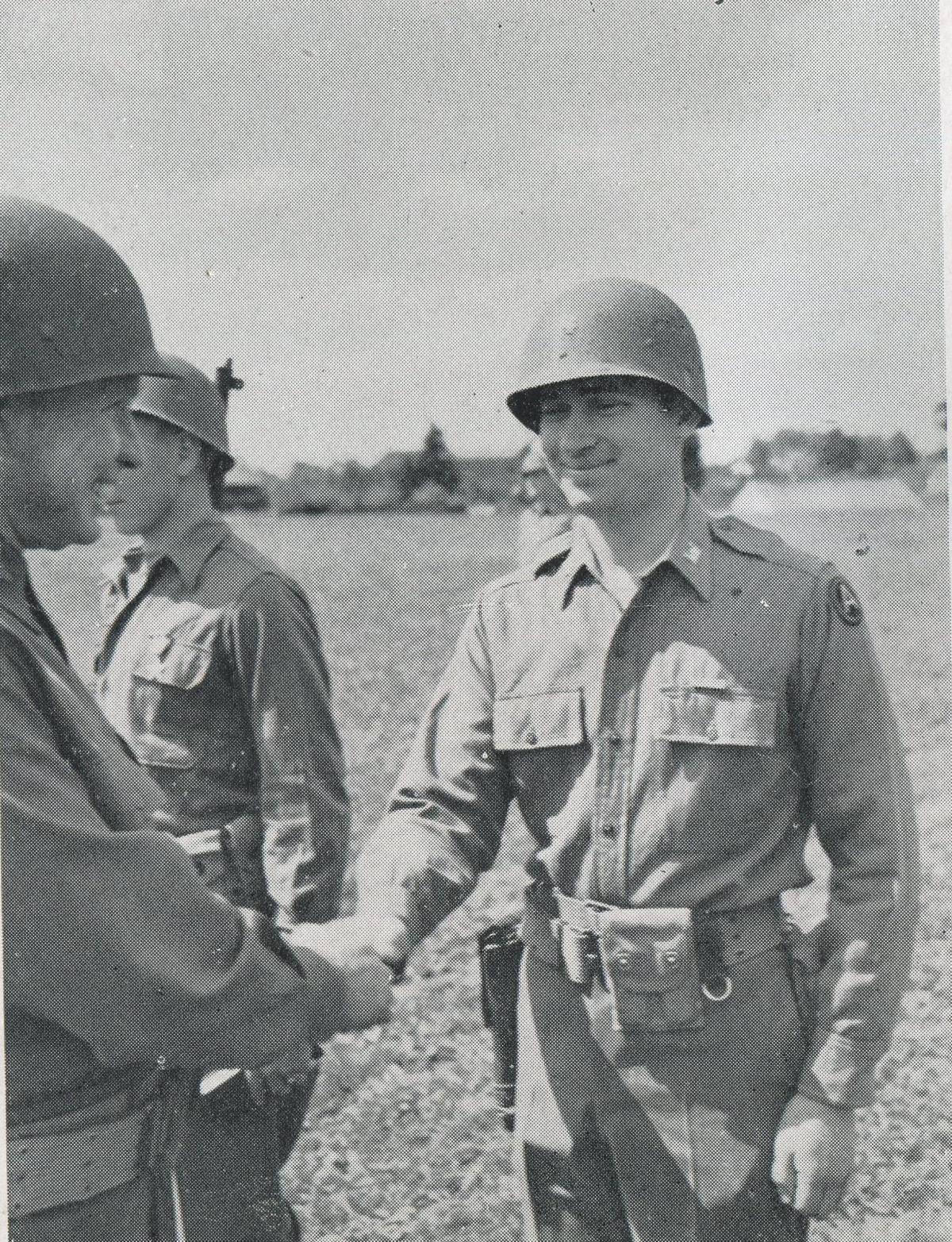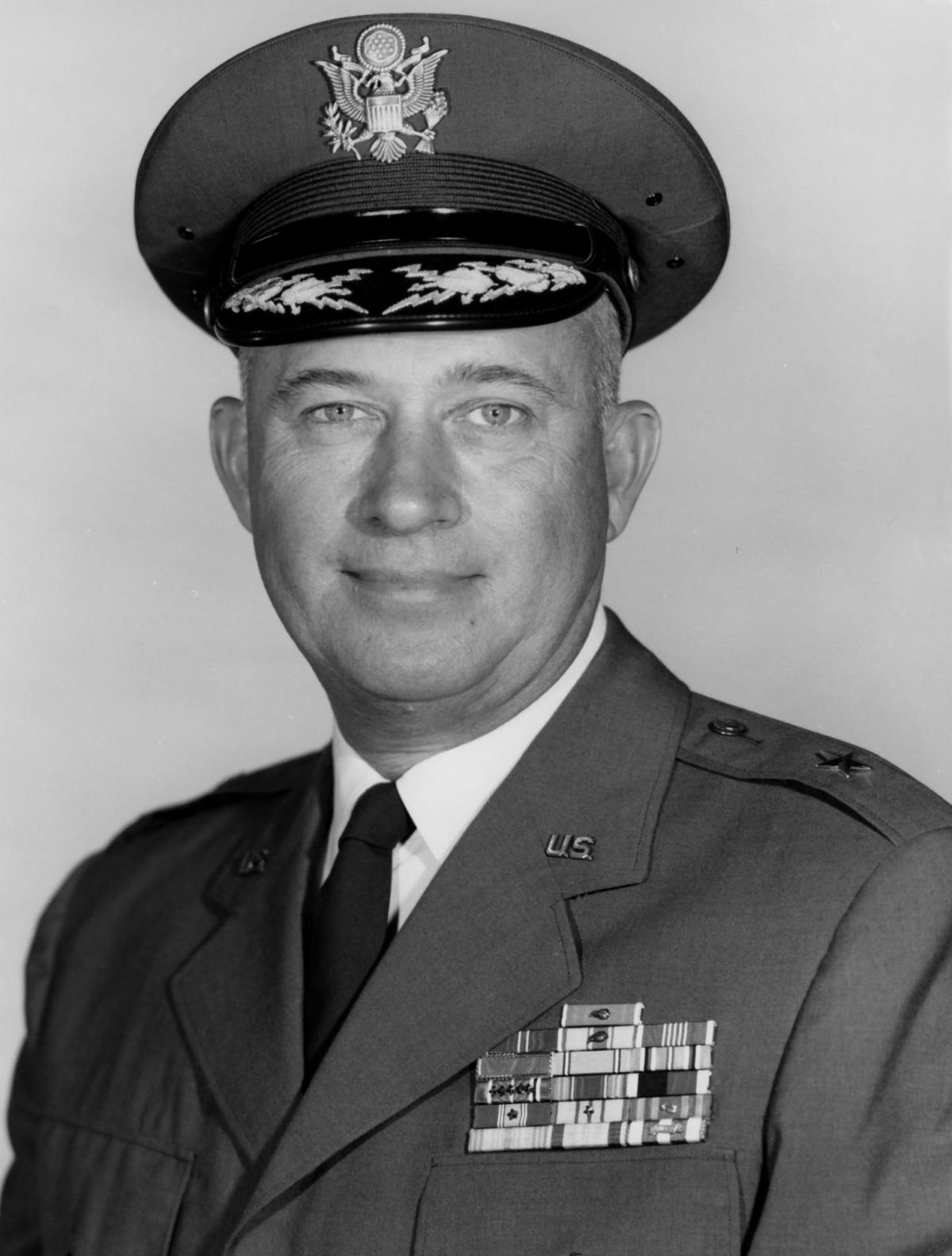Account from Edwin N. Blasingim,First Sgt., Company B, 160 Engineer Combat Battalion, as told to his son.
On August 12, 1944,the LST that carried Dad and many of the men of the 160th anchored off of Utah Beach and the men with their rifles and full packs went over the side into smaller boats that took them ashore. Dad said that he didn't even get his feet wet. Utah Beach was a huge confusing traffic jam, thousands of men, hundreds of vehicles, LSTs lining the beach and three roads out.These men of the battalion started their journey across France on foot. They marched about three miles west from the beach, about half way to Sainte-Mere-Eglise, to a large field where the 160th was forming a convoy. They pitched pup tents and spent two days there while the rest of the men, supplies and equipment arrived. The completed convoy headed out for the Seine River and the German front. These were the last days of " Operation Overlord ", this phase of the war would be over when the Germans had been pushed back across the Seine.
The 160th convoy was organized by companies with Headquarters and Service company in the lead.The convoy moved like an accordion. One minute you were stopped in traffic and the the next you were trying to catch up. Your foot was either on the gas or the brake. The convoy made an effort to bypass towns but when they couldn't they breezed right through. The 160th traveled as far as they could each day, one day they covered about seventy five miles. They went through places that had been destroyed by recent fighting and they skirted the fighting at the Falaise Gap when they convoyed from Avranches to Alencon. They did a few small assignments like providing security, making small road or bridge repairs or even blowing a bridge that was of use to the enemy. The big assignment was to get to the front quickly.
Dad sometimes rode in a jeep and sometimes he was a back-up driver for a 6x6, " the best driving vehicle the U.S. Army had ". When the convoy was moving they often yielded the right of way to vehicles that were trying to pass them. Some of those vehicles were gas trucks, 6x6s loaded with "Jerry cans" of gasoline. Somewhere ahead of the 160th was an Armored Division with a lot of thirsty tanks.
Each afternoon H&S would send a few vehicles ahead to secure a place for the night, big enough to park a battalion convoy and usually close to water. The area was patrolled and secured and a perimeter guard was set up that changed every four hours. Water points were set up and and rolling kitchens started preparing the evening meal. Sometimes the men would get into the nearby stream and wash off and even rinse out some clothing.
The men were not told what route they were taking or what their destination was. Dad said that things always seemed to be in a state of confusion, but they managed to move six hundred and fifty men with equipment to build roads and bridges, clear mines and fight like infantry across France in eleven days.
Cartoon drawn by Paul E. Tuttle, SSgt., H&S Company, 160 ECB from Morristown, New Jersey. His impression of a 160th convoy ( from 160th Battalion book).
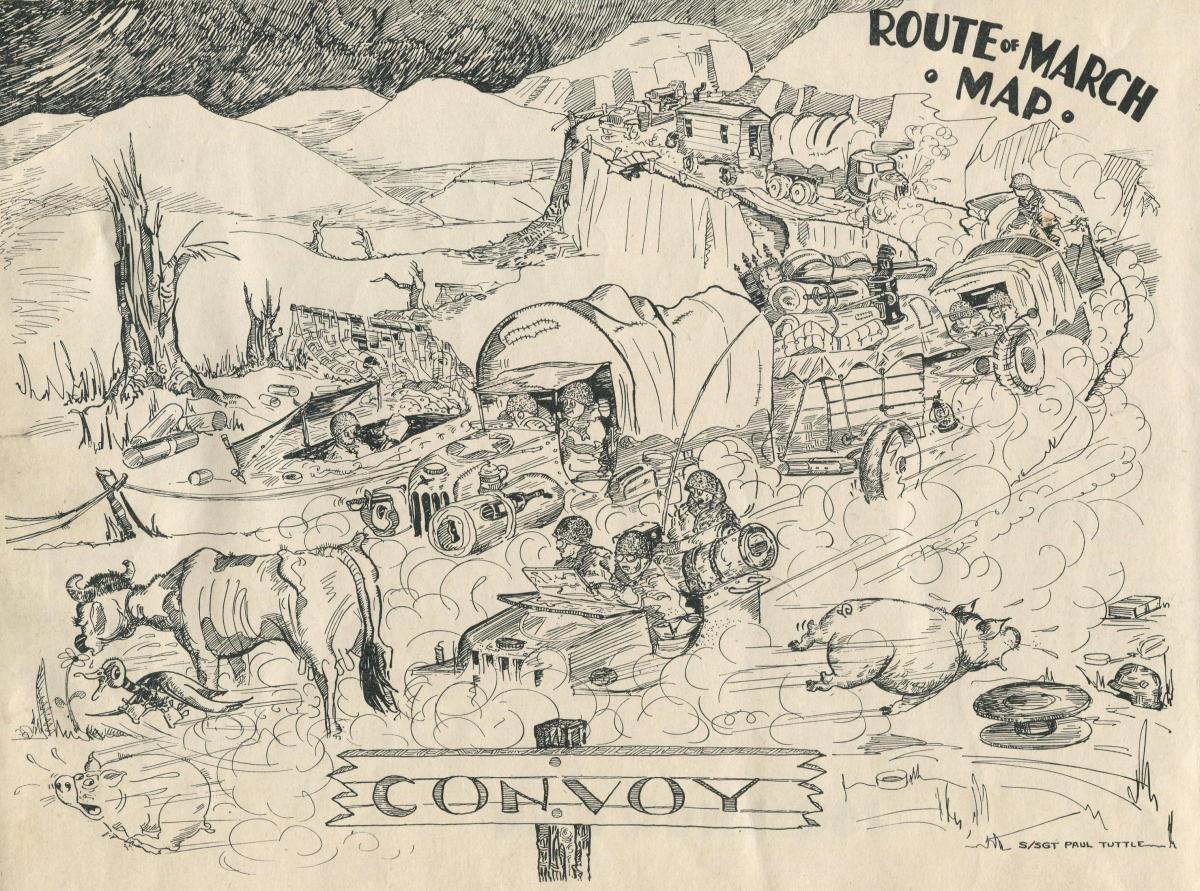
Map of convoy route.
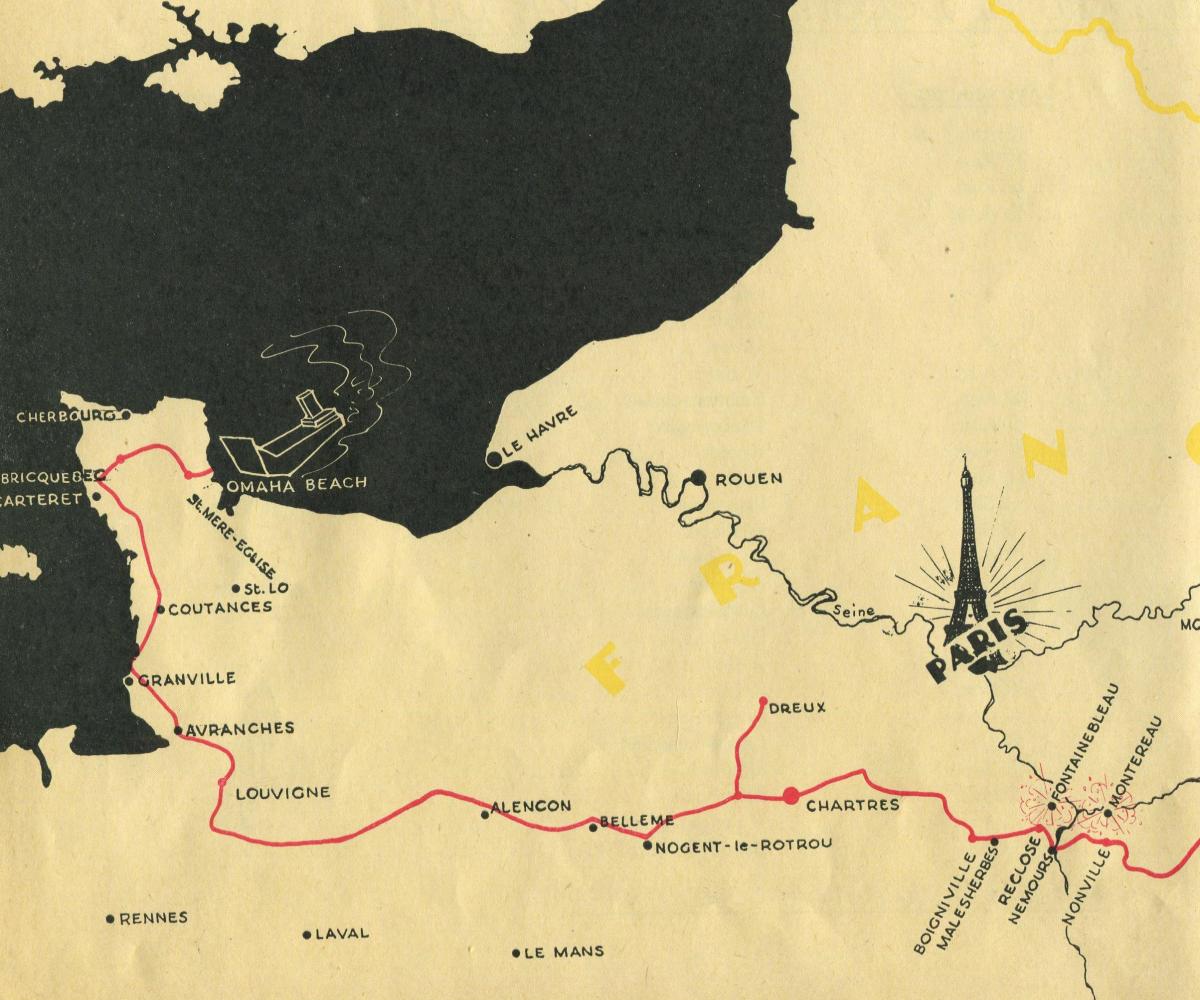
Gas Truck.
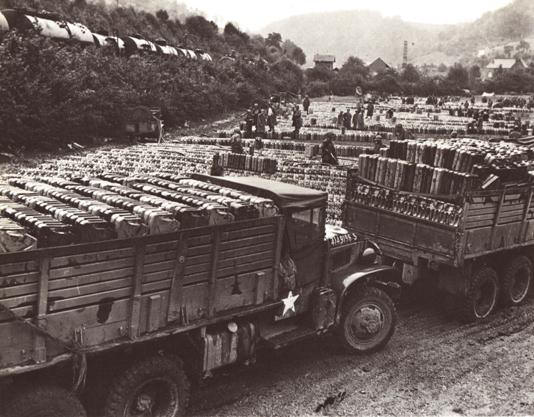
One reason the Engineers are in a hurry to get up front.
